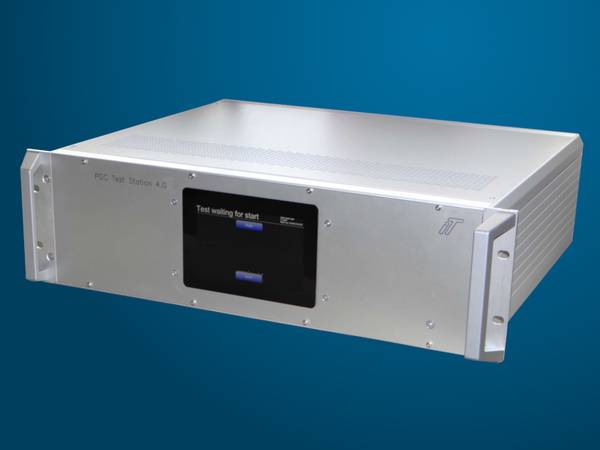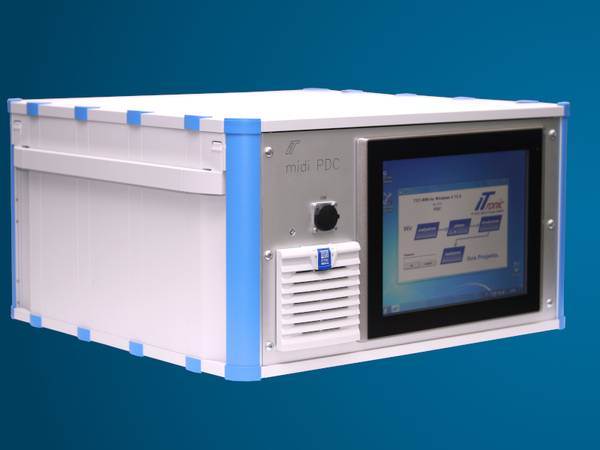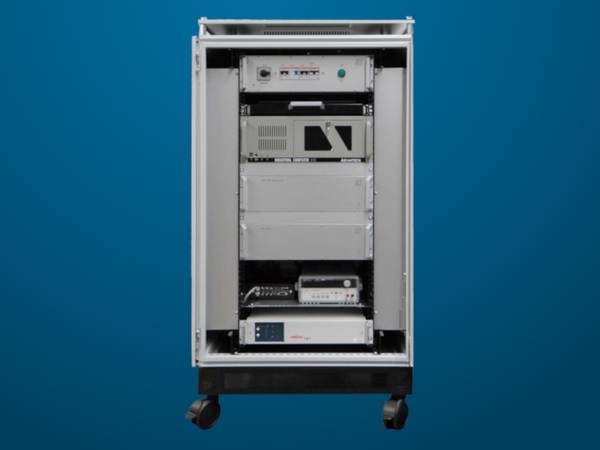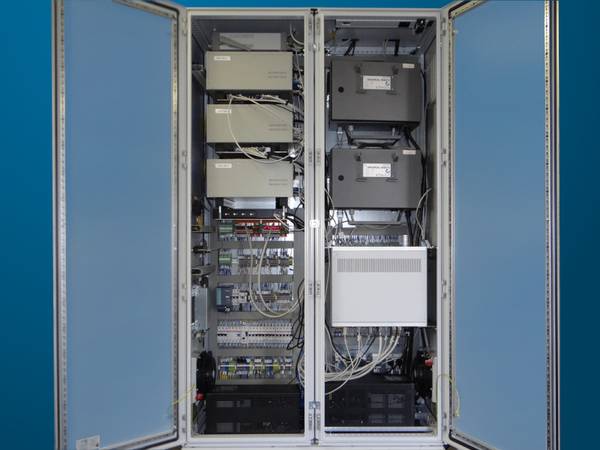- Company
- Performance
- Solutions
- Products
- Service
- Career
- Contact


The amount of electronics in the bumper is continuously increasing thanks to stricter safety standards and the emergence of autonomous driving.
Although the parts required for this have all undergone 100% testing before they are sent to the TIER 1 suppliers and OEMs, sensitive parts can become faulty during installation or when painted. These impairments can lead to cost-intensive recall actions especially with respect to safety-relevant parts. For this reason, retesting of the components to eliminate faults and for customer documentation is extremely important.
A simple installation and presence check is often insufficient. The manufacturers of the individual components stipulate precisely how components need to be tested. Our modular test equipment will help you by covering all necessary test scenarios.

Our smallest measuring and test equipment can be integrated easily into your system thanks to its small dimensions. We would be pleased to support you with our extensive know-how in the integration into your software environment.
Our cost-efficient entry-level solution for electrical inspection and test applications. The intelligent measuring system E-CheckITautomatically records all required resistance and current measurements as well as resulting data such as component presence or non-assembly check. 16 analog channels, multiplexed, differential and individually programmable cover all your quality assurance requirements.
This model serves the electronic review by Valeo ultrasonic sensors that are used in the field of automotive bumpers. The measuring equipment provides eight freely configurable measuring channels in a compact housing which means that the device can be used in a versatile manner. The Mini-PDC is downwards-compatible and supports the Valeo Generation 5, Generation 4 and Generation 3. On request, this can be extended to generation 6. The Mini-PDC can be used as a stand-alone device or in conjunction with another system.
The test specification of the manufacturer Bosch defines a separate test procedure. We integrate the generation-specific test module into the test system on the hardware and software side.
For electronic components with CAN (-FD) interface, a pure presence check via current consumption is often not sufficient. In order to differentiate between the sensor variants, to read out the hardware and software version or to log the installed serial number, communication via the sensor-specific bus system is required for these safety-relevant components (e.g. radar sensors). In conjunction with the associated software module, a wide variety of testing tasks can be parameterized and covered.
For electronic components with FlexRay interface, a pure presence check via current consumption is often not sufficient. In order to differentiate between the sensor variants, to read out the hardware and software version or to log the installed serial number, communication via the sensor-specific bus system is required for these safety-relevant components (e.g. radar sensors). In conjunction with the associated software module, a wide variety of testing tasks can be parameterized and covered.
A pure presence check via the current consumption is often not sufficient for electronic components with a LIN interface. Often communication via the sensor-specific bus system is necessary for these parts (e.g. VIP or HFA sensors) to export hardware and software releases or to log the installed serial number. In conjunction with the associated software module, the various test tasks can be configured and covered.
Cameras have various interface standards, e.g. KOAX, LVDS and Ethernet. Our camera communication modules allow testing all interface standards.

Our Midi test equipment is a test unit in a modular design. In addition to various manufacturers and generations of ultrasound sensors, other electronic parts can also be tested. The heart of the Midi test equipment is an industrial PC including our Windows-based TST-WIN test software. The industrial PC with various output levels can be adapted perfectly to your application. This guarantees a flexible and expandable connection to your overriding system.

Our MidiAdvanced test equipment is a test rack with individually expandable modules. The test hardware and software can be selected and expanded subsequently for your test piece in line with your requirements and circumstances.
The test rack offers all possibilities for integration into your production layout. In addition to the classic end-of-line test, an in-line test is also possible.

Maxi test equipment is a classic control cabinet that can be expanded individually with various modules. The test hardware and software can be selected and expanded subsequently for your test piece in line with your requirements and circumstances.